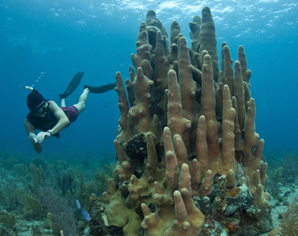The Cuban government has created several agencies to protect the environment. Among them are the National Parks Service, the National Commission of Environmental Protection and Rational Use of Natural Resources (1977), the National Environmental Education Program, the Academy of Sciences of Cuba, and the National Commission for the Protection of the Environment and for Conservation of Natural Resources. As of 2000, Cuba's most pressing environmental problems were deforestation and the preservation of its wildlife. The government has sponsored a successful reforestation program aimed to replacing forests that had gradually decreased to a total of 17% of the land area by the mid-1990s.
Endangered species in Cuba include the Cuban solenodon, four species of tree rats( jutías), two species of crocodile (American and Cuban rombifer ), and the Cuban tree boa. In 2001, 9 out of 31 mammal species were considered threatened. 13 ouf 137 bird species were also in jeopardy. 7 out of 105 kinds of reptiles were dying out,along with 834 plant species out of a total of 6,000-plus. The ivory-billed woodpecker, Cuban red macaw, Caribbean monk seal, and Torre's cave rat have become extinct.
The National System of Protected Areas of the Republic of Cuba has proposed, after detailed studies on the values of the biodiversity of the country, to establish the areas of greatest ecological, social-historical-cultural relevance of the nation. This is to guarantee the conservation and the sustainable use of the Cuban biodiversity, considering it a priority within the National program of Environment and Development. It is also to show commitment of the Cuban State to dedicate part of the Convention on biological diversity. This system is integrated by 236 units, 79 of them protected areas of national importance, and the rest considered protected areas of local importance.



